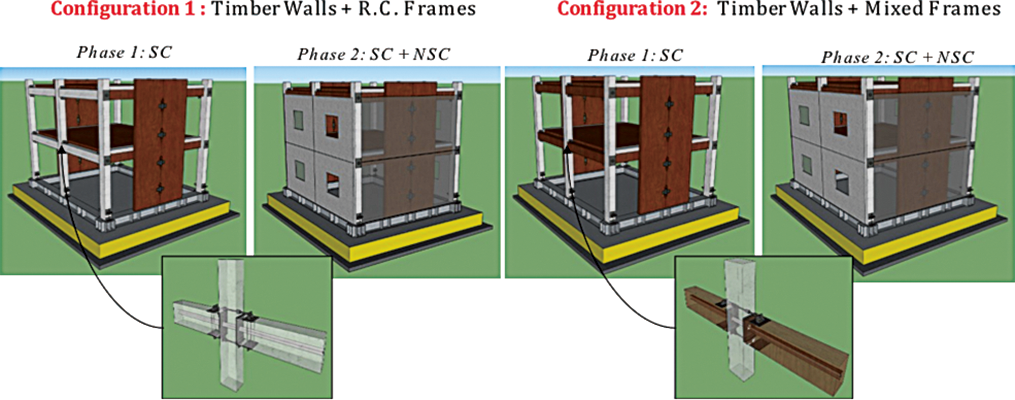Title of Project:
(Towards the) Ultimate Earthquake proof Building System: development and testing of integrated low-damage technologies for structural and non-structural elements
Hosting Research Infrastructure:
LNEC
No. of Users:
14
Team Leader:
Sapienza University of Rome
Stefano Pampanin
Team:
IUSS Pavia
Andre’ Filiatrault
Daniele Perrone
Swiss Federal Institute of Technology (ETH) Zurich
Bozidar Stojadinovic
Anastasios Tsiavos
Arup, London
Damian Grant
Arup, Amsterdam
Rachid Abu-Hassan
Michele Palmieri
University of Canterbury
Alessandro Palermo
Giuseppe Loporcaro
Gabriele Granello
Sapienza University of Rome
Simona Bianchi
Jonathan Ciurlanti
Murilo Mancini
Summary of Project:
Earthquake Engineering is facing an extraordinarily challenging era, the ultimate target being set at increasingly higher levels by the demanding expectations of our modern society. Targeting life-safety is arguably not enough for our modern society and communities. A paradigm shift is required towards a damage-control or low-damage design philosophy which should embrace the building system as a whole.
This project intends to promote a catalyst research effort within the European environment for the development and wider industry/community uptake of an integrated low-damage building system, including skeleton and non-structural components for the next generation of buildings.
Attention will be given to design methodologies and technical solutions for both the structural skeleton and the non-structural components (e.g. partitions, facades, ceilings, services). A ‘flexible and sustainable’ design approach will be considered by employing modular demountable, replaceable and relocatable components to facilitate the re-arrangement of internal spaces, layout and exterior “envelope/ dress” of these building systems. This in turn would allow for potentially several changes of use during its (potentially extended) lifetime (e.g. residential vs. commercial/offices/retails and vice-versa) with also potential re-usability and recyclability of obsolete or not anymore fit-for-purposes components. In turns this would lead to an enhanced level of ‘sustainability – by design’.
Core role will be given to the use of internationally emerging solutions based on self-centering and dissipative systems using prefabricated elements and unbonded post-tensioning techniques. This technology, originally developed for precast concrete from the 1990s (with the PRESSS-Program coordinated by Nigel Priestley at UCSD) has gone through a substantial and comprehensive developments and refinement in the past 15 years, and subsequently extended to steel and timber (engineered wood) solutions (Pres-Lam or prestressed laminated timber) with numerous on-site applications (and incorporations within code design provisions) in New Zealand and growing interest around the world.
The SERA Project will focus on the needs and peculiarities of the European reality, developing specific ad-hoc solutions with reference to current design codes (EC8 as well as national codes, as the Italian NTC08), construction practices and market expectation.
The overall research project will comprise analytical/numerical and experimental investigations focusing around the shake table tests of a 1:2 or larger scale super-assembly (two storeys-two bays building system) low-damage building system, comprising structural skeleton (frames in one directions and coupled walls in the other) and non-structural components/envelope/services.
The research team brings together a strong academic-industry group, with a unique mixture of research and design experience, covering the various key aspects of material, design approaches, modelling, building technology, experimental testing. The SERA Project will give the unique opportunity to leverage on and further develop, the last 15-20 years of research, developments and best design practice experience of the key researchers in this field and carry out a (probably world first) large scale shake-table test of a complete low-damage building systems, based on rocking-dissipating post-tensioned solutions (frames and walls, with mixed materials, concrete an timber) and low-damage non-structural elements. The outcomes of the project will be widely disseminated through various channels (papers, seminars, presentations, courses, website, databases, guidelines) to the international technical and non-technical community to further raise the awareness on these latest low-damage technologies and further stimulate the interest of the wider industry, policy makers, stakeholders for its wider embracing in the near future.


